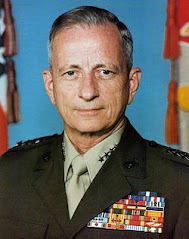by Andy Weddington
Friday, 24 June 2016
No object is mysterious. The mystery is your eye. Elizabeth Bowen
A handful of exhausted, dirty, sweaty, battle-hardened men were struggling to upright a heavy length of pipe.
One of them, the leader, looked around and said, "Hey, Schultz, give us a hand."
So Schultz did as he was told.
Up went the pole.
And with rocks stacked at the base and a few rope guy lines it was secured.
The fluttering American flag atop signaled but a moment of victory - there was more fighting to do.
For more than 71 years not Schultz but Bradley was believed one of the six men.
Truth, in plain view those seven plus decades, came yesterday.
Behind that truth is quite a story.
Two years ago I read an article about a couple of amateur sleuths who had taken a closer look at the figures in that World War II iconic moment (captured on film by Joe Rosenthal) of our flag being raised atop Mount Suribachi on the atoll Iwo Jima.
Based on analysis of other photographs and sundry bits and pieces and logic they made a compelling case that one of the men in the photograph had not been correctly identified.
That is, the man believed to be Navy Pharmacist's Mate Second Class (corpsman) John Bradley was in fact Marine Private First Class Harold Schultz.
Wow!
I wondered if the Marine Corps would in turn investigate.
They did.
So the bottom line is six Marines, not five Marines and a Sailor, raised that battlefield flag pole.
Oh the intrigue.
What we will never know.
John Bradley died in January 1994.
Harold Schultz died less than 18 months later.
Secure in death the rest of the story. And that seems right.
In Bradley's son's (James) book - 'Flags of our Fathers' - he mentioned his father's instructions to the children when reporters would come calling for a story around the anniversary (23 February 1945) of the flag raising - tell them your father is away on a fishing trip in Canada. The author wrote his father never took such a trip.
Thinking about that tidbit since first learning of the saga two years ago it's difficult to believe these two men did not know who was on that pole.
Could that be, at least in part, why John Bradley did not want to face the media?
And what about Harold Schultz?
Surely he knew he was one of the six.
Why not set the record straight?
Perhaps it's not complicated at all.
Might it be as simple as - Marines are trained "we."
In that light, the powerful and enduring message of that inspiring battlefield moment has not changed - it represents we. It represents teamwork and courage and perseverance and conquering that which was billed unconquerable.
Interesting the letter "i" does not appear in John Bradley nor Harold Schultz.
But an "i" word does come to mind - impossible.
As in it's impossible to imagine what these two young men, and their brother Marines and Sailors, witnessed and endured in battle.
Duty. For being "we" they won.
And we won; though at great cost.
In conclusion...
To paraphrase Elizabeth Bowen's opening thought - truth is always before us but the challenge is to see it and exercise the courage to tell it.
Semper Fidelis.
Post Script
Hence forward, U. S. Marine Corps history will cite in Mr. Rosenthal's photograph: Sergeant Mike Strank; Corporal Harlon Block; Private First Class Ira Hayes; Private First Class Franklin Sousley; Private First Class Rene Gagnon; Private First Class Harold Schultz.
Strank, Block and Sousley were killed in combat.
"Doc" Bradley was awarded the Navy Cross for heroism tending to wounded Marines. He, too, was wounded and awarded the Purple Heart.













No comments:
Post a Comment